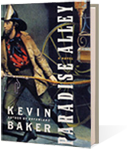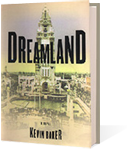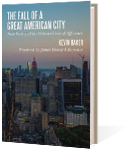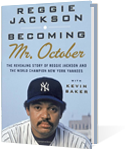I love voting. I love pretty much everything about it. My polling place is and has been for many years the Alfred E. Smith School, P.S. 163, an elementary school. The voting booths are arrayed around a mottled, parquet gym floor, and there are always mothers running a bake sale outside to raise money for the school.
Up until a few years ago, we voted on huge, metal machines that seemed like relics from the first days of the industrial age. Exercising the franchise was a pleasing combination of sacred civic ritual and theatricality. You waited in line, gave your name, signed the voting rolls, then were ushered behind a curtain that you closed by slamming a red-handled lever big enough to have served as a prop in “Modern Times” to one side. You flicked more mechanical switches to choose your candidates behind the curtain — a rare oasis of total privacy out in public Manhattan. You could even change your mind and flip them back, at least until the end, when you gave the lever a satisfying slam back the other way, and the curtain slid open. You half-expected the Wizard of Oz to appear.
Now that was casting a vote!
That’s all changed, thanks to our supposed concern about voter fraud. Since New York instituted its new, computerized voting system, the way things work are as follows: We line up to give our names and get a ballot. We then go a second line for the next available, barely private voting “booth” — in reality a table with a sort of sneeze guard around three sides. When we’re finished, we line up a third time to run our ballots through the next available computer, which assures us that our votes have been registered as we wanted, although who can possibly say. Knowing how protected vital American computer systems are against hackers, I’m waiting for the Election Day the screen tells me my candidate is stuck in Nigeria, and desperately needs a money order to get home and take office.
The whole process not only takes three lines — something New Yorkers just love — and is barely private. Volunteers at the polls can easily see whom you voted for at the computers, and often must run the ballots through the scanners for the more elderly or infirm voters. So much for the sanctity of the ballot. The bake sales are still great, though.
The lines were fairly sparse at the Smith school today, which inevitably led me to think back to the very long lines and the wild enthusiasm that imbued our first opportunity to vote for Barack Obama for president, in 2008.
“All politics is national” now, which made this midterm election yet another referendum on President Obama, and it has turned out to be another overwhelming repudiation of the president, who already suffered one debacle back in 2010.
This appears to have been a baffling rejection to this supremely detached president, whose supporters have been protesting that the public just does not appreciate all he has done — a list that invariably includes Obamacare, a revived stock market and an unemployment mark that has inched slowly downward.
What the White House doesn’t seem to appreciate is just how little a dent this has made in the devastating loss of wealth, security and opportunity so many Americans have experienced in the last few years. But this administration has also been afflicted almost from the start with the inability to decide just whom it is trying to appeal to.
Like Bill Clinton before him, this New Democrat president early on dismissed traditional liberals as “professional leftists” as his first press secretary once put it. But just a few months ago he also let his new F.C.C. chairman suggest an end to net neutrality, and his secretary of education heartily endorse the decision of a Republican judge ending teacher tenure, in which said judge claimed “there are a significant number of grossly ineffective teachers currently active in California classrooms.”
Well, which is it? Are you trying to build the new, white-collar Democratic Party or not, and if so, where do you expect these people to come from?
This sort of confusion about practical politics has long bedeviled New Democrats. And in fairness, we did let the president down, after that cool, cool fall day in 2008. The sorts of sweeping, groundbreaking reforms we were hoping for — the change we could believe in — has never been accomplished from the top down in America, but has always meant a president gathering up the strands of many useful ideas and experiments, and working with the power, and often the hands, feet, elbows and knees, of grass-roots movements at his back.
Franklin D. Roosevelt’s leading advisers, Harry L. Hopkins, Frances Perkins, Harold L. Ickes and Henry A. Wallace, among others, had labored long in the trenches on crucial issues of social welfare, labor rights, and land and farm preservation. The Tennessee Valley Authority came out of a decades-long struggle for public power, by Senator George W. Norris. No one in the Congress or Mr. Obama’s cabinet has provided anything like this sort of counsel, or experience.
Nor has there been anything like the sorts of longstanding, populist, militant farm and labor movements that put the New Deal over. In the turmoil of the 1930s, worker uprisings literally took over waterfronts, factories, department stores and even the city of Minneapolis. Occupy Wall Street took over Zuccotti Park, then evaporated. It takes more than that — more than casting a vote every couple of years — to make change.









